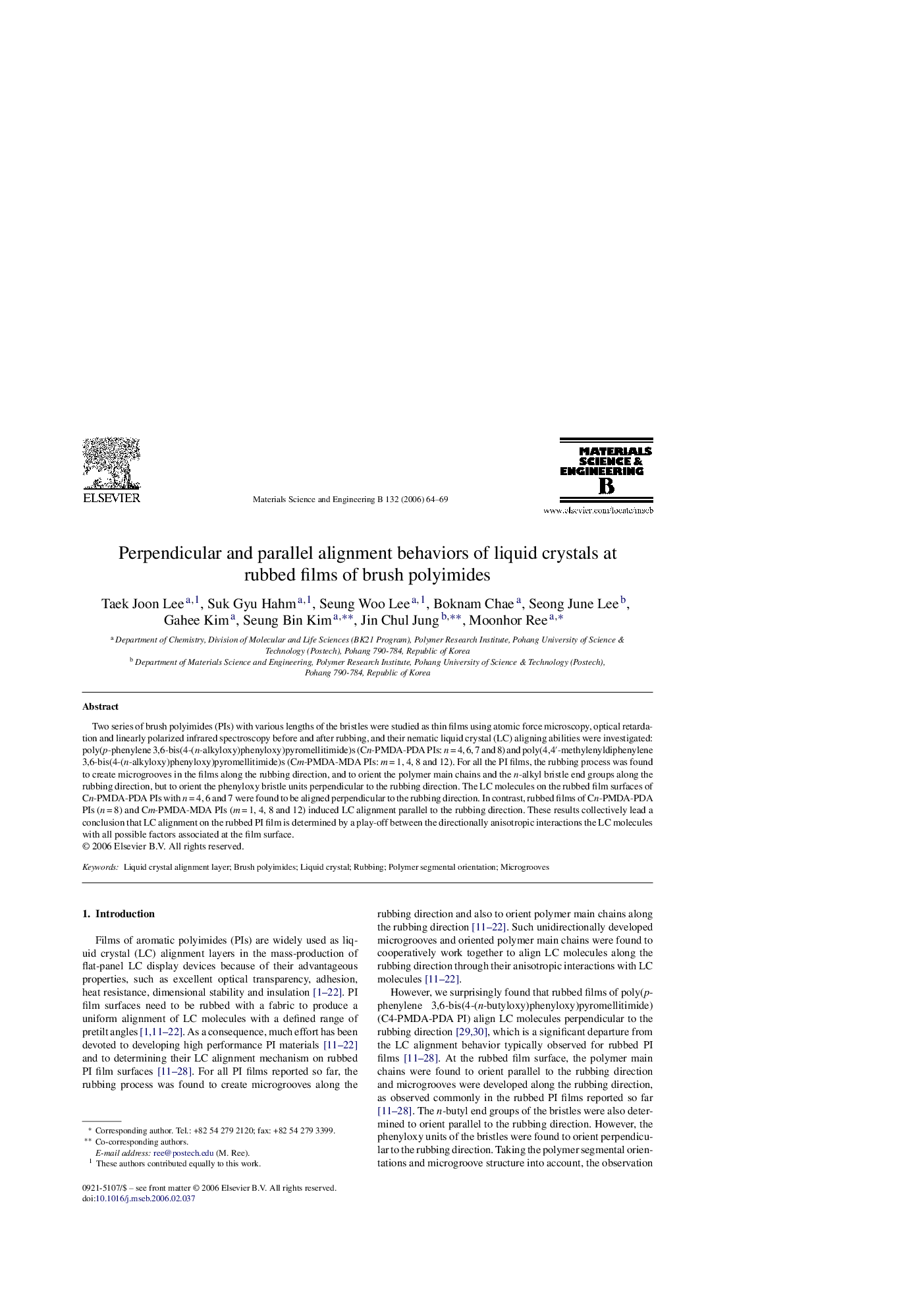| Article ID | Journal | Published Year | Pages | File Type |
|---|---|---|---|---|
| 1531948 | Materials Science and Engineering: B | 2006 | 6 Pages |
Two series of brush polyimides (PIs) with various lengths of the bristles were studied as thin films using atomic force microscopy, optical retardation and linearly polarized infrared spectroscopy before and after rubbing, and their nematic liquid crystal (LC) aligning abilities were investigated: poly(p-phenylene 3,6-bis(4-(n-alkyloxy)phenyloxy)pyromellitimide)s (Cn-PMDA-PDA PIs: n = 4, 6, 7 and 8) and poly(4,4′-methylenyldiphenylene 3,6-bis(4-(n-alkyloxy)phenyloxy)pyromellitimide)s (Cm-PMDA-MDA PIs: m = 1, 4, 8 and 12). For all the PI films, the rubbing process was found to create microgrooves in the films along the rubbing direction, and to orient the polymer main chains and the n-alkyl bristle end groups along the rubbing direction, but to orient the phenyloxy bristle units perpendicular to the rubbing direction. The LC molecules on the rubbed film surfaces of Cn-PMDA-PDA PIs with n = 4, 6 and 7 were found to be aligned perpendicular to the rubbing direction. In contrast, rubbed films of Cn-PMDA-PDA PIs (n = 8) and Cm-PMDA-MDA PIs (m = 1, 4, 8 and 12) induced LC alignment parallel to the rubbing direction. These results collectively lead a conclusion that LC alignment on the rubbed PI film is determined by a play-off between the directionally anisotropic interactions the LC molecules with all possible factors associated at the film surface.
